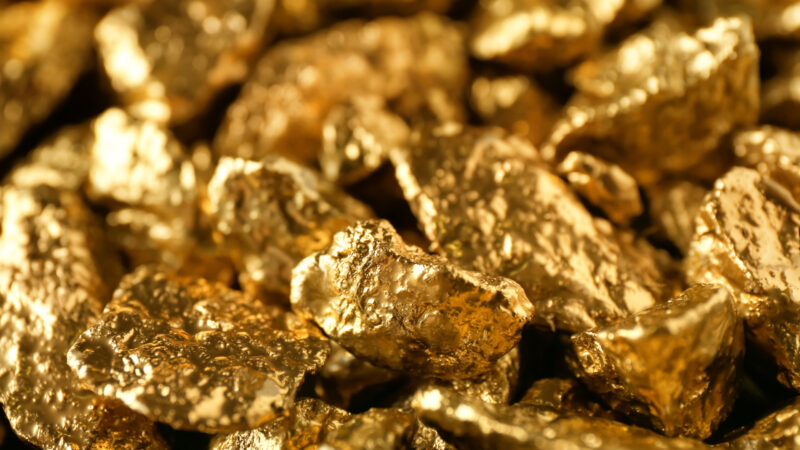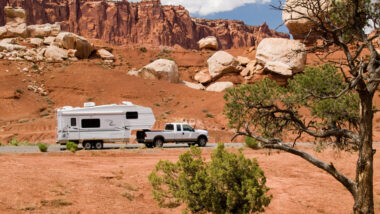Table of Contents Show
You don’t have to be a history buff to know about the California Gold Rush. Forty-niners rushed across the country to strike it rich in the late-1840s. Today California remains one of the top five states in gold production. Nevada, Alaska, Colorado, and Arizona join the ranks of active gold mines in the country.
If you’re heading to the Grand Canyon State to see the red rocks of Sedona or the Saguaro cacti of the Sonoran Desert, you might want to take a few days to try your hand at striking it rich.
Let’s look at some of the gold mines in Arizona, where you might discover your own gold nugget. Let’s dig in!
When Was Gold First Discovered in the United States?
Although the first documented discovery of gold was in Virginia in 1782, the search for gold didn’t really begin until after the discovery at the Reed farm in North Carolina in 1799.
In fact, people discovered so much gold in North Carolina that they had to establish a mint in Charlotte to process it.
In 1848 when James W. Marshall discovered gold at Sutter’s Mill in California, the mass rush to the West Coast began.
How Many Gold Mines Are In Arizona?
As of January 2022, Arizona had 433 active, full-time mines or development projects, but not all mine gold. According to the Arizona Geology e-Magazine, 27 of these sites are metallic mines or development projects.
Arizona has only one active gold mine, Moss Mine, in Mohave County. The Moss Mine in northwest Arizona is an open-pit gold-silver mine that processes over 5,000 tons of ore daily.
Two other projects -— the Allegiant Gold Clanton Hills Project and the Kerr Mines Copperstone Project — also mine gold.
Allegiant Gold Clanton Hills Project lies west of Phoenix, and the Copperstone Project at Kerr Miles has produced thousands of ounces of gold.
How Does Gold Mining in Arizona Compare to Other States?
Arizona is the top copper-producing state in the country. The state accounts for about 70% of the country’s copper output, with nine active copper mines.
According to NS Energy, “All of Arizona’s gold that was produced in 2006 was a by-product of copper mining.” But the opening of the Moss Mine in 2018 increased the state’s gold production.
However, the Grand Canyon State still ranks in the top five for gold mining. No state compares to Nevada. It’s home to seven of the top ten sites in the country, producing about 70% to 80% of the gold produced in America.
Over the last 10 years, the state has produced 5 to 5.6 million ounces of gold yearly. Compare this to the approximately 360,000 million ounces of gold produced in Arizona.

Tips for Exploring Gold Mines in Arizona
If you’re looking to do some of your own prospecting in Arizona, keep a couple of things in mind. First, water is scarce, so metal detecting is the best way to search for gold.
If you use a metal detector, keep it as close to the ground as possible. The arid environment lends itself to dry washing as well.
Also, look for iron-rich red dirt, desert trumpet plants, caliche layers, and surface black sands. These indicate a high chance for gold.
If you really want to explore gold mines in Arizona, you might consider joining a local club. This way, you’ll have access to private claims.
7 Gold Mines In Arizona Where You Might Find Gold
There are seven gold mines in Arizona where you’ll have the best luck prospecting. These areas are home to current or past mining projects.
1. Lynx Creek District
Near the Prescott National Forest in Yavapai County is the Lynx Creek. Over 100,000 ounces of gold have been mined out of this area since 1863 when people first discovered gold here.
The Forest Service requires prospectors to use metal detectors or gold panning, but the area is open to public prospecting.
2. Rich Hill District
People have discovered gold along the Antelope and Weaver Creek areas of Rich Hill for 150 years. Many people come with metal detectors to mine gold in this area of Arizona.
However, others show up with dry washers, pans, rockers, sluices, dry separators, and power shovels. People have found small grains to large nuggets in and around Rich Hill.
3. Gold Basin District
Located in Mohave County, the Gold Basin District is another popular gold mine in Arizona. Metal detecting and dry washing are common methods like in other areas of the dry desert.
People have found gold embedded in quartz in both lode and placer forms. The El Dorado and OK Mines were once in this region.
Keep in Mind: Are Arizona National Parks Worth Visiting? Let’s take a look!
4. San Francisco District
Another gold mine in Mohave County is the San Francisco District. The Oatman and Silver Creek areas have been especially popular among prospectors.
Like the gold in the Gold Basin District, the gold here has also been found embedded in the quartz metamorphic rock, which has been transported by flooding.

5. Dos Cabezas District
In Cochese County, the Dos Cabezas District gold mines in Arizona have produced significant amounts of gold. This area has lode deposits and placers, and several large nuggets were found at the Teviston placers.
Prospectors may have luck searching between Walnut Cayon and Howard Canyon and between Gold Gulch and Ash Gulch.
6. Huachuca District
The Huachuca District near the southern end of the Huachuca Mountains has a history of placer gold discoveries.
Local clubs have gold claims here, so you’ll probably have better luck prospecting if you join one of them. People have found nuggets weighing several ounces in Ash Canyon.

7. La Paz District
Finally, the La Paz District, about 10 miles west of Quartzsite, was mined heavily at one time. In recent years, prospectors have found gold with metal detectors. This area has been worked extensively and has a rich mining history.
Therefore, Goodman Wash and La Paz Wash are the richest areas in the district today. However, they’re off-limits because they lie on the Colorado River Indian Reservation.
Keep in Mind: Do you enjoy ghost towns? Then you won’t want to miss Rhyolite!
Which State Is the Largest Producer of Gold?
As mentioned earlier, Nevada is the largest producer of gold in the United States. The state has three of the world’s top ten gold mines. In addition to producing the majority of our nation’s gold, Nevada is also the only state that produces lithium.
Silver, copper, geothermal energy, gypsum, and other minerals are also major commodities produced in the Silver State.
Try Your Luck at These Gold Mines in Arizona
If you’re a prospector, Arizona is a good choice for a road trip. Grab your metal detector and a map and head out to some of these gold mines and try your luck at discovering gold nuggets.
Perhaps your gamble will pay off. But even if it doesn’t, exploring the Grand Canyon State and all of its beauty isn’t such a bad idea anyway.
Would you venture out to the gold mines in Arizona and try your hand at prospecting?







I would like to try paning for gold